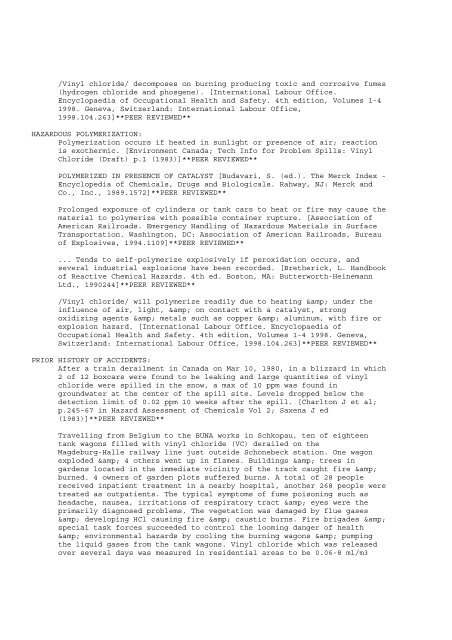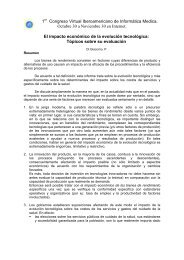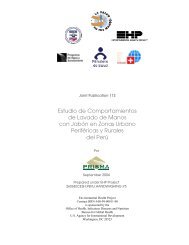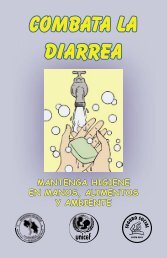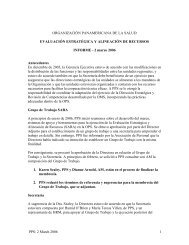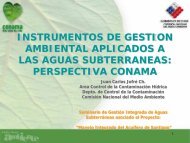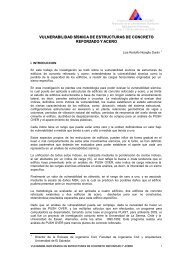a database of the National Library of M
a database of the National Library of M
a database of the National Library of M
You also want an ePaper? Increase the reach of your titles
YUMPU automatically turns print PDFs into web optimized ePapers that Google loves.
Vinyl chloride/ decomposes on burning producing toxic and corrosive fumes(hydrogen chloride and phosgene). [International Labour Office.Encyclopaedia <strong>of</strong> Occupational Health and Safety. 4th edition, Volumes 1-41998. Geneva, Switzerland: International Labour Office,1998.104.263]**PEER REVIEWED**HAZARDOUS POLYMERIZATION:Polymerization occurs if heated in sunlight or presence <strong>of</strong> air; reactionis exo<strong>the</strong>rmic. [Environment Canada; Tech Info for Problem Spills: VinylChloride (Draft) p.1 (1983)]**PEER REVIEWED**POLYMERIZED IN PRESENCE OF CATALYST [Budavari, S. (ed.). The Merck Index -Encyclopedia <strong>of</strong> Chemicals, Drugs and Biologicals. Rahway, NJ: Merck andCo., Inc., 1989.1572]**PEER REVIEWED**Prolonged exposure <strong>of</strong> cylinders or tank cars to heat or fire may cause <strong>the</strong>material to polymerize with possible container rupture. [Association <strong>of</strong>American Railroads. Emergency Handling <strong>of</strong> Hazardous Materials in SurfaceTransportation. Washington, DC: Association <strong>of</strong> American Railroads, Bureau<strong>of</strong> Explosives, 1994.1109]**PEER REVIEWED**... Tends to self-polymerize explosively if peroxidation occurs, andseveral industrial explosions have been recorded. [Bre<strong>the</strong>rick, L. Handbook<strong>of</strong> Reactive Chemical Hazards. 4th ed. Boston, MA: Butterworth-HeinemannLtd., 1990244]**PEER REVIEWED**/Vinyl chloride/ will polymerize readily due to heating & under <strong>the</strong>influence <strong>of</strong> air, light, & on contact with a catalyst, strongoxidizing agents & metals such as copper & aluminum, with fire orexplosion hazard. [International Labour Office. Encyclopaedia <strong>of</strong>Occupational Health and Safety. 4th edition, Volumes 1-4 1998. Geneva,Switzerland: International Labour Office, 1998.104.263]**PEER REVIEWED**PRIOR HISTORY OF ACCIDENTS:After a train derailment in Canada on Mar 10, 1980, in a blizzard in which2 <strong>of</strong> 12 boxcars were found to be leaking and large quantities <strong>of</strong> vinylchloride were spilled in <strong>the</strong> snow, a max <strong>of</strong> 10 ppm was found ingroundwater at <strong>the</strong> center <strong>of</strong> <strong>the</strong> spill site. Levels dropped below <strong>the</strong>detection limit <strong>of</strong> 0.02 ppm 10 weeks after <strong>the</strong> spill. [Charlton J et al;p.245-67 in Hazard Assessment <strong>of</strong> Chemicals Vol 2; Saxena J ed(1983)]**PEER REVIEWED**Travelling from Belgium to <strong>the</strong> BUNA works in Schkopau, ten <strong>of</strong> eighteentank wagons filled with vinyl chloride (VC) derailed on <strong>the</strong>Magdeburg-Halle railway line just outside Schonebeck station. One wagonexploded & 4 o<strong>the</strong>rs went up in flames. Buildings & trees ingardens located in <strong>the</strong> immediate vicinity <strong>of</strong> <strong>the</strong> track caught fire &burned. 4 owners <strong>of</strong> garden plots suffered burns. A total <strong>of</strong> 28 peoplereceived inpatient treatment in a nearby hospital, ano<strong>the</strong>r 268 people weretreated as outpatients. The typical symptoms <strong>of</strong> fume poisoning such asheadache, nausea, irritations <strong>of</strong> respiratory tract & eyes were <strong>the</strong>primarily diagnosed problems. The vegetation was damaged by flue gases& developing HCl causing fire & caustic burns. Fire brigades &special task forces succeeded to control <strong>the</strong> looming danger <strong>of</strong> health& environmental hazards by cooling <strong>the</strong> burning wagons & pumping<strong>the</strong> liquid gases from <strong>the</strong> tank wagons. Vinyl chloride which was releasedover several days was measured in residential areas to be 0.06-8 ml/m3


